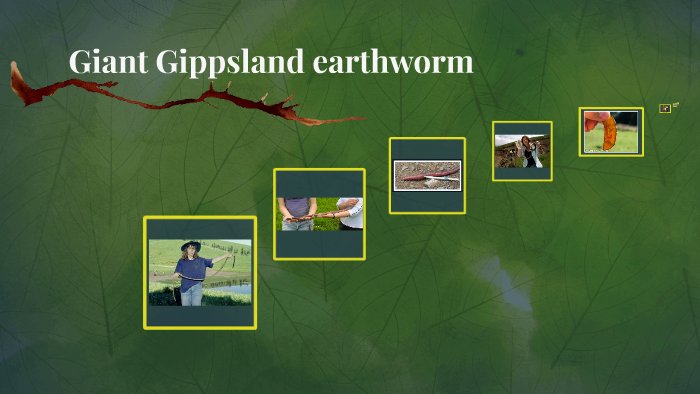
Imagine the Giant Gippsland earthworm as the unsung hero of the soil, tirelessly working beneath the surface while most of us never realize their importance. But just as heroes face villains, these worms encounter various threats that jeopardize their populations. From natural predators to human-induced changes in their environment, the survival of these worms is constantly at risk. In this article, we’ll dive into the challenges facing Giant Gippsland earthworms and discuss why it’s vital to protect them.
Understanding Giant Gippsland Earthworms
Before we explore the threats, let’s get to know these incredible earthworms a bit better. Giant Gippsland earthworms are native to the Gippsland region of Victoria, Australia. They live in deep burrows, which can reach several meters below the surface. These burrows not only help the worms find moisture but also serve as a habitat for other soil-dwelling creatures.
What sets these worms apart is their impressive size and unique reproductive habits. They can live for several years, with some individuals reaching a length of over three meters! These worms are also notable for their ability to secrete a slime that helps them move through their burrows and retain moisture.
Natural Predators: Who’s After the Earthworm?
In their natural habitat, Giant Gippsland earthworms face several predators. Birds, particularly magpies and other ground-dwelling species, are known to feast on these long, juicy worms. Frogs and snakes, too, have been observed hunting them down. The burrowing nature of these worms provides some protection, but when they surface—especially during wet weather—they become vulnerable.
Here’s the thing: the relationship between predators and prey is a natural cycle. While it’s essential for the ecosystem, it becomes a problem when the predator population increases. For example, if the native bird population explodes, they might consume more giant earthworms than the ecosystem can sustain. It’s like a delicate balance that, when tipped, can threaten the worm populations.
Environmental Changes and Habitat Loss
Giant Gippsland earthworms thrive in a specific environment that includes moist, nutrient-rich soils. Unfortunately, environmental changes pose a significant threat to their population. Urbanization, agriculture, and deforestation are leading to habitat loss, which restricts the space available for these worms to thrive.
When forests are cleared or land is used for agriculture, the soil composition changes. This change can diminish the nutrients essential for the worms to survive. Additionally, soil erosion can strip away the layers where they live. As a result, many worms may find themselves without a suitable habitat, leading to declining populations.
Climate Change: A Looming Threat
You might be wondering how climate change affects Giant Gippsland earthworms. Well, it’s a big deal. Altered weather patterns can lead to extreme temperatures and changes in precipitation levels, impacting the moisture levels of their burrows. These worms depend on consistent moisture to survive, so prolonged droughts or excessive rainfall can greatly affect their populations.
Moreover, climate change can also exacerbate soil degradation. With increasing temperatures, soil health can decline, making it harder for earthworms to find food and reproduce. This cycle of declining habitat and population is concerning and requires urgent attention.
Human Impact: Agriculture and Pollution
Humans often inadvertently affect the ecosystems around them. The agricultural practices that benefit crops can be detrimental to Giant Gippsland earthworms. Chemical fertilizers and pesticides, for example, can seep into the soil and lead to pollution. This not only harms the worms but also disrupts the entire soil ecosystem.
Additionally, practices like tilling can destroy the delicate burrows that these earthworms rely on. When the ground is disturbed, it not only affects the worms directly but can also lead to the loss of their food sources. It’s essential for farmers and land managers to understand these impacts and seek sustainable practices that protect these vital creatures.
Conservation Efforts: Protecting The Giant Gippsland Earthworm
Despite these threats, there’s hope. Various organizations and conservationists are working hard to protect the Giant Gippsland earthworm and its habitat. Raising awareness about their importance and the challenges they face is vital. Educational programs in schools and communities can help people understand why every creature, no matter how small, has a role to play in our ecosystem.
Conservation efforts focus on restoring habitats, promoting sustainable farming practices, and ensuring that legislative policies protect these unique worms. Simple actions, like planting native vegetation and reducing pesticide use, can significantly contribute to their survival.
What Can You Do to Help?
Every little bit counts when it comes to protecting the Giant Gippsland earthworm. Here are some ways you can help:
- Educate Yourself: Learn more about the ecology of your area and the creatures that inhabit it.
- Support Conservation Programs: Participate in or donate to organizations aiming to protect local wildlife.
- Reduce Chemical Use: If you garden, consider using organic methods that don’t harm the soil ecosystem.
- Spread the Word: Talk about the importance of these worms with friends and family.
The combined efforts of individuals, communities, and conservationists can make a significant difference.
Final Thoughts: The Importance of Biodiversity
Giant Gippsland earthworms are more than just a fascinating species; they are an integral part of their ecosystem. Protecting them means safeguarding the health and diversity of our environment. By understanding the threats they face, we can take meaningful steps toward their conservation. It’s not just about saving a worm; it’s about preserving the intricate web of life that supports us all. Let’s work together to ensure that these remarkable creatures can continue to thrive for generations to come.
